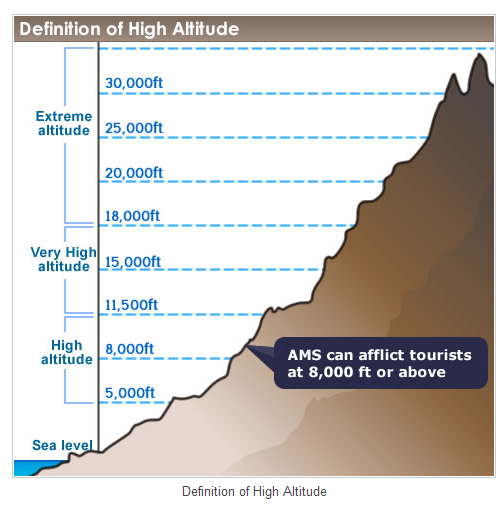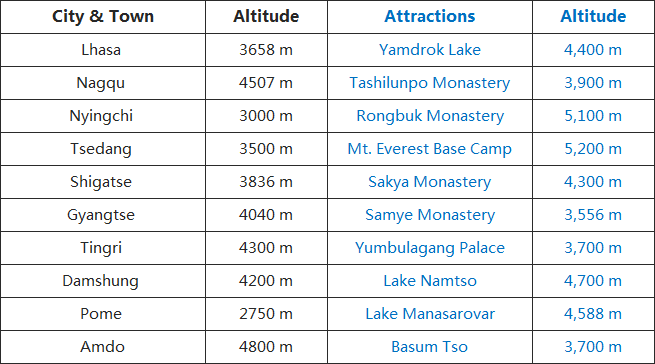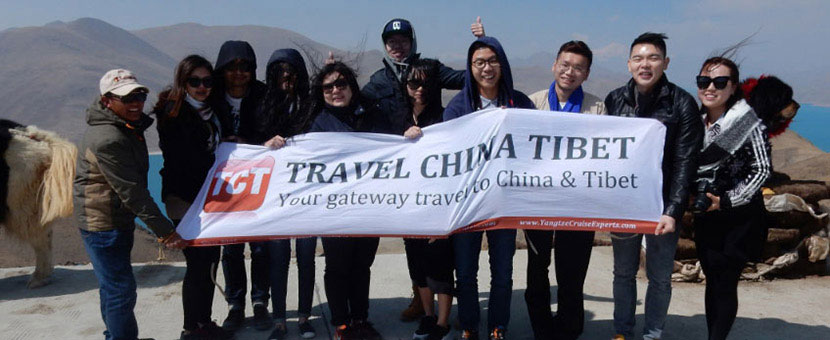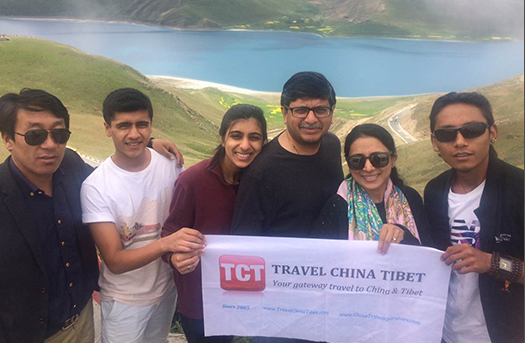High altitude sickness is a major difficulties of Tibet travel, but it is not as serious as you imagined. People react differently to the altitude. If you are planning a Tibet tour, it is advisable to have physical examination. Those who suffer from high blood pressure, heart disease or chest problems should seek medical advices before going to Tibet.
What is high altitude sickness ?
High altitude sickness, also called mountain sickness, is a problem that occurs when people travel from lower elevations to about 8,000 feet or more above sea level. Serious types of altitude sickness include high-altitude pulmonary edema (fluid in the lungs) and high-altitude cerebral edema (swelling of the brain). With altitude sickness, the travelers may first feel like having the flu or a hangover, with symptoms such as, headache, fatigue, appetite loss, nausea, insomnia and difficulty breathing during exercise.
High altitude is definision:
Common High Altitude: 1500 - 3500 m (5000 - 11500 ft)
Very High Altitude: 3500 - 5500 m (11500 - 18000 ft)
Extremely High Altitude: above 5500m

What are the symptoms ?
Common symptoms of altitude sickness include: headaches, shortness of breath, tightness in the chest, severe lack of appetite, burning, dizziness, fatigue and increased urination. Due to the lack of oxygen, other symptoms may occur in certain individuals including the inability to sleep, giddiness, lips and fingertips turning bluish purple, drowsiness and other symptoms. Due to the dry atmosphere, others might experience nosebleeds, rough skin, chapped lips or (in more serious cases) blood clots.
How to avoid high altitude sickness ?
Before visiting Tibet, get in good mood both physically and psychologically.
For adventure travelers, please have physical exercise plan at least one month before the tour. Activities like, swimming, stair climbing is good.
Do not catch a cold or serious flu before Tibet, it adds the possibility of having altitude sickness, and might threat your life.
Take the prescribed medication before reaching Tibet and continue to take the medication upon arrival there.
Avoid drinking coffee or alcohol, instead you need to drink more water and taking sleeping pills in the high altitude areas.
Eat high-carbohydrate foods (rice, pasta, cereal, fruits, vegetables) while avoiding fatty stuff.
Avoid active movements and try to relax in the first 1-2 days upon arrival.
Diamox 125 mg. tablets taken twice a day is F.D.A. approved for prevention and treatment of A.M.S. Although it originally was released as a diuretic (water pill), it also helps you breath deeper and faster. This allows you to get more oxygen. Diamox is especially helpful with the sleeping problems and other symptoms of A.M.S. Avoid sleeping pills because they may cause shallow breathing at night and make it more difficult for your body to absorb oxygen while you sleep.
Use Oxygen to relieve symptoms, but if you can endure, better no to use it, naturally physical acclimatization is the best way.
If nothing else works, return to the areas with the lower elevation.
Being relaxed and optimistic, it helps in some degrees..
We have oxygen bottle in the vehicle for high altitude sickness, and if other medical emergency happens, we will drive directly to the nearby hospitals for treatment. And it is advisable that clients should buy insurance from their countries to cover the evacuation and tour cancellation.
Who Can't Go to Tibet?
It's advisable to have a body check-up or have your doctor's advice before visiting Tibet. Visitors having record of heart, lung, liver, kidney problems must seek medical advice before making the decision to go to Tibet! Generally speaking, the following persons should not go to Tibet:
Have already caught a cold
Have severe anemia
Have high blood pressure or severe heart disease
Have pneumonia, tuberculosis, tracheitis, or bronchitis
Hospital in Lhasa
If you have trouble in acclimatizing Acute Mountain Sickness (AMS), don't hesitate to ask our tour guide to take you to consult a doctor in city. Following are some recommended hospital or clinics in Lhasa:
1)TAR People's Hospital (Xizang Zizhiqu Renmin Yiyuan)-the largest hospital in Lhasa with integrated facilities and experieced doctor.
2)Chuanwang Zhensuo (Clinic)- The clinic is located on the west of Beijing Donglu. You can ask the hotel receptionist to arrange the doctor's visit.
3)Lhasa City People's Hospital (Lhasa Renmin Yiyuan)- This hospital sits on the eastern side of the junction where the Beijing Donglu meets the Linlang Donglu .
Traveling by Train VS. Flight
Arriving by plane means sudden exposure to altitude above 3,000 meters and no gradual incline or acclimation. For this reason, altitude sickness is much more common for fliers. If you are entering Tibet by ground transport (train being the most common), the change is more gradual and you may have less severe symptoms as a result. However, there are also a number of disadvantages to travelling via ground. The train to Tibet from Beijing, Shanghai, Guangzhou, Chengdu, Chongqing actually will go up to 5000M pass, most people still suffer from altitude sickness when taking train, and there is no good medical service on the train for treatment, so from this point, train travel is even more difficult than flights. The best way is to take either train or flight to Xining (over 2000m) and stay a few days there for allimatization, then continue the train from Xining to Tibet. Read More: Disadvantage of Tibet Train Travel
Solutions for altitude sickness when you are already in Tibet
When already in Tibet, if in any case you suffer from symptoms like a serious cold, edema, pulmonary edema or severe headaches, then call your guide and go to the hospital immediately.
In serious cases, the only way is to descend to lower altitude places, there are many flights available. And it is also advisable to buy insurance from your country to cover evacuation and tour cancellation.
Tibet Altitude Guide
Travelers to Tibet should spend at least 3 days at a place with relatively low altitude, such as Lhasa or Tsetang, for acclimatization before traveling to a higher altitude.













